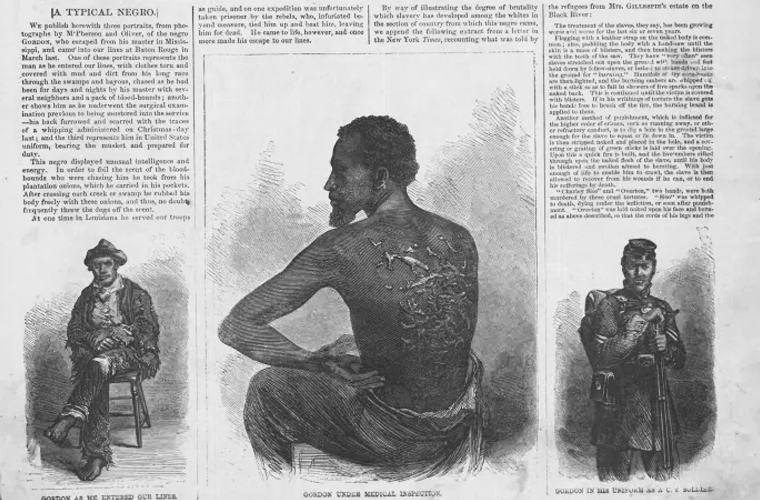The harrowing tale of Peter’s experience as a slave during the Civil War in America is a poignant reminder of the inhumane treatment suffered by black people in the South. His story serves as a testament to the resilience and strength of the Black race, while also shedding light on the brutal oppression and suppression inflicted by the Caucasian race. Peter’s journey began when he arrived at the gates of the Baton Rouge camp of the Union soldiers in March 1863. After enduring a relentless pursuit by bloodhounds and slave bounty hunters, he sought refuge and safety among the Northern troops. His body bore the physical scars of his ordeal, with raised cuts, wounds, and strafe marks marring his back, a testament to the brutality he had endured.
The soldiers who listened to Peter’s account were shocked and appalled by the inhumane treatment inflicted upon him by his slave masters. His narrative painted a vivid picture of the cruelty and suffering experienced by enslaved individuals in the South. The image of the scars on Peter’s back served as a stark reminder of the atrocities of slavery, igniting a sense of shame and awakening the conscience of many Northern soldiers. The photograph of Peter’s damaged back, captured by itinerant photographers at the Union Camp, became a powerful tool for raising awareness about the harsh and inhumane practices of slavery. The images circulated not only in America but also in Europe, sparking a growing sense of compassion and empathy for the plight of enslaved individuals.

The widespread dissemination of these photographs played a pivotal role in the abolitionist movement, as they served as compelling evidence of the need to eradicate the institution of slavery. Abolitionists utilized these images to raise funds for their cause, leveraging the visual evidence of suffering to galvanize support for the abolitionist movement. The impact of Peter’s story and the accompanying photographs reverberated throughout America and beyond, shining a spotlight on the true conditions of slavery in the South. The barbarity and inhumanity of the Southern slavers were laid bare for all to see, challenging the prevailing narrative that sought to justify slavery as an economic necessity rather than a manifestation of racism.
The testimonies of Army surgeons who examined escaped slaves, including Peter, further corroborated the widespread brutality suffered by these individuals. Their accounts painted a grim picture of lacerations and injuries akin to those depicted in the photographs, providing irrefutable evidence of the physical and psychological trauma inflicted upon enslaved individuals. In the aftermath of the Civil War, Peter’s fate remains shrouded in mystery, with little known about his life beyond his courageous escape and subsequent enlistment in the Union army. However, one thing is certain: he carried with him the indelible scars and trauma of his enslavement, a burden that undoubtedly shaped his existence until his death.
The legacy of Peter’s story endures as a testament to the resilience and courage of those who endured the horrors of slavery. His narrative serves as a poignant reminder of the enduring impact of systemic oppression and a call to confront the painful truths of history. Through his suffering and resilience, Peter’s story stands as a testament to the strength and perseverance of the human spirit in the face of unimaginable adversity.

